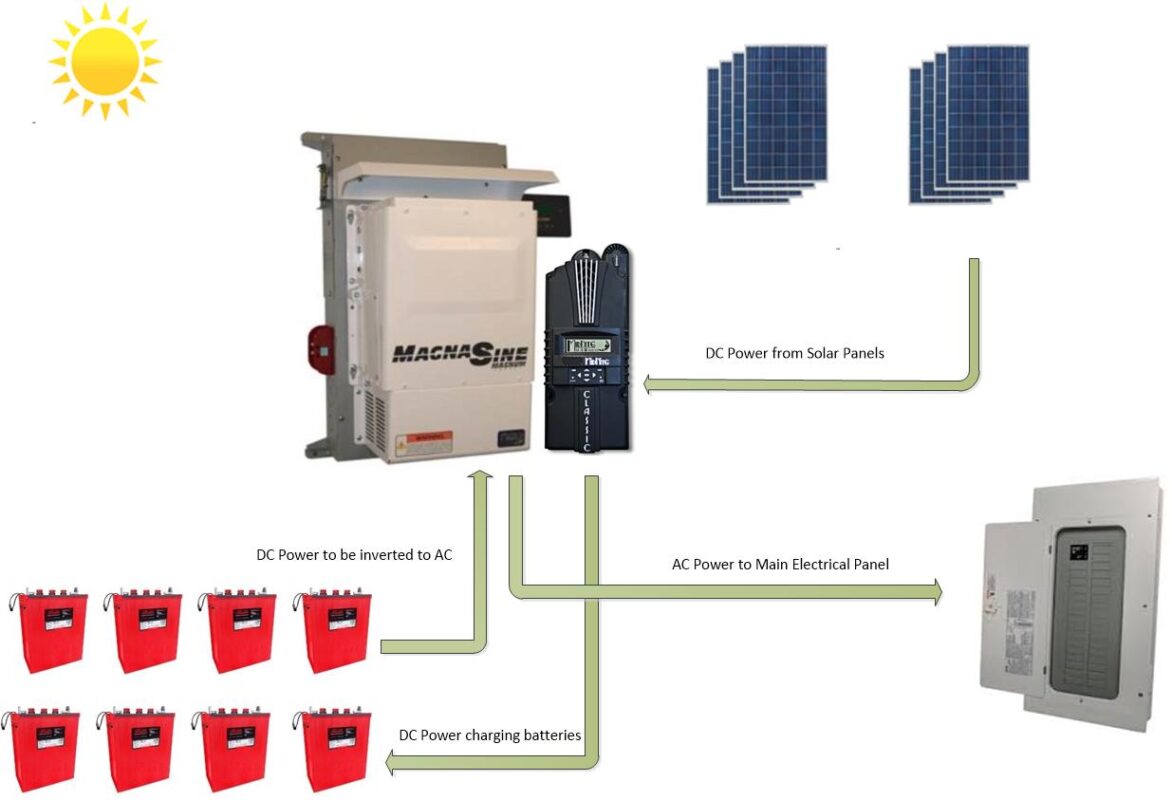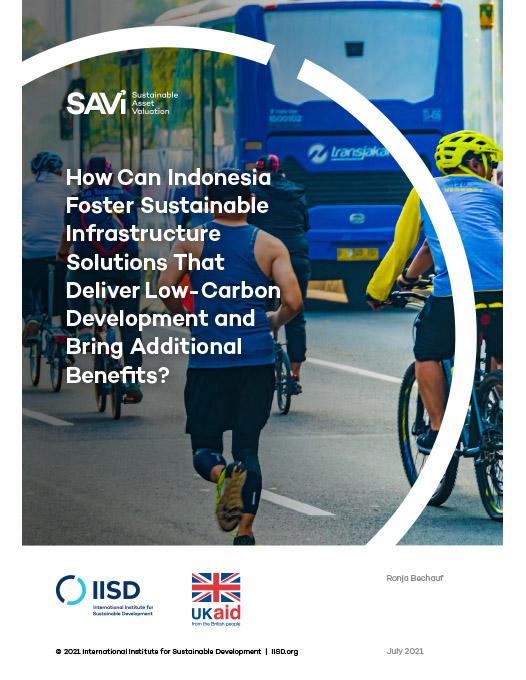Achieving Grid Independence for Sustainable Living

Embracing Sustainability Through Grid Independence
In a world where sustainability is gaining paramount importance, the concept of achieving grid independence is emerging as a powerful and transformative approach. This article explores the myriad benefits of grid independence and how it contributes to a more sustainable and resilient lifestyle.
Understanding Grid Independence
Grid independence refers to the ability of a home or a community to generate and manage its own power without relying on the traditional electric grid. This entails harnessing renewable energy sources and implementing energy-efficient practices to meet the energy needs of the household or community.
Reducing Dependence on Fossil Fuels
One of the primary benefits of grid independence is the significant reduction in dependence on fossil fuels. Traditional energy sources contribute to environmental degradation and climate change. By transitioning to renewable energy sources like solar or wind power, individuals and communities can play a vital role in mitigating the impact of climate change.
Harnessing the Power of Solar Energy
Solar power stands out as a cornerstone in achieving grid independence. Installing solar panels allows homes and businesses to generate electricity from the sun, reducing reliance on conventional power sources. This transition not only contributes to sustainability but often results in long-term cost savings, making solar energy a compelling choice.
Ensuring Energy Resilience
Grid independence enhances energy resilience, particularly during times of grid outages or disruptions. Homes with solar panels and energy storage solutions can continue to operate independently, ensuring a stable power supply even when the grid faces challenges. This resilience is crucial for maintaining essential services and a comfortable living environment.
Economic Benefits for Individuals and Communities
Beyond environmental considerations, grid independence offers economic benefits. Homeowners and communities can experience reduced energy bills over time as they generate their own power. In some cases, excess energy can be fed back into the grid, providing opportunities for financial incentives or credits from utility companies.
Community-Level Grid Independence
The concept of grid independence extends beyond individual homes to entire communities. Community-level initiatives involve shared resources and collaborative efforts to establish sustainable energy practices. This approach fosters a sense of collective responsibility and resilience, creating more robust and sustainable neighborhoods.
Government Support and Incentives
Governments worldwide recognize the importance of transitioning towards grid independence. Many countries offer support and incentives to individuals and communities embracing renewable energy. These incentives may include tax credits, rebates, or favorable financing options, making the transition to grid independence more accessible.
Educating for Grid Independence
Education plays a crucial role in promoting grid independence. Individuals and communities need information about available technologies, government incentives, and the environmental benefits of transitioning to renewable energy. Educational initiatives can empower people to make informed choices and actively participate in the shift towards sustainability.
Technological Advancements in Grid Independence
Technological advancements contribute significantly to the feasibility of grid independence. Improved energy storage solutions, smart grid technologies, and innovations in renewable energy systems enhance the efficiency and reliability of grid-independent setups. Staying informed about these advancements allows individuals and communities to make strategic decisions for sustainable living.
Grid Independence Benefit: A Link to a Sustainable Future
In conclusion, the benefit of grid independence extends far beyond personal or community-level advantages. It is a powerful link to a sustainable future where environmental stewardship, economic benefits, and energy resilience converge. Explore more about Grid Independence Benefit at SolarHelp.info and join the journey towards a more sustainable and resilient world.
Eco-Friendly Solutions: Advancing Sustainable Living

Eco-Friendly Solutions: Unveiling the Benefits of Sustainable Living
Living sustainably is not just a trend; it’s a commitment to a healthier planet. This article explores the myriad benefits of adopting sustainable solutions, showcasing how eco-friendly choices contribute to environmental well-being, economic savings, and an enhanced quality of life.
Environmental Advantages of Sustainable Living
At the core of sustainable living is a profound respect for the environment. Adopting eco-friendly practices and products reduces carbon footprints, minimizes pollution, and conserves natural resources. From choosing renewable energy sources to embracing zero-waste lifestyles, each sustainable action contributes to a healthier and more resilient planet.
Economic Savings through Sustainable Practices
Contrary to the misconception that sustainable living is expensive, it often leads to economic savings in the long run. Energy-efficient appliances, water conservation measures, and waste reduction strategies translate into lower utility bills. Additionally, sustainable practices, such as recycling and upcycling, contribute to resource efficiency and cost-effectiveness.
Renewable Energy: A Pillar of Sustainable Solutions
Embracing renewable energy sources is a cornerstone of sustainable living. Solar panels, wind turbines, and other clean energy technologies offer a decentralized and eco-friendly alternative to traditional power sources. The shift to renewable energy not only reduces dependence on fossil fuels but also contributes to a more resilient and sustainable energy infrastructure.
The Impact of Sustainable Transportation
Transportation is a significant contributor to carbon emissions. Sustainable transportation choices, such as electric vehicles, bicycles, and public transit, play a crucial role in reducing environmental impact. Beyond lowering emissions, these choices often result in cost savings, improved air quality, and enhanced personal well-being.
Eco-Friendly Homes and Green Building Practices
Sustainable living extends to the very homes we inhabit. Green building practices prioritize energy efficiency, environmentally friendly materials, and innovative designs that reduce ecological footprints. Eco-friendly homes not only minimize environmental impact but also create healthier and more comfortable living spaces.
Promoting Sustainable Agriculture and Food Choices
The food we consume has far-reaching implications for the environment. Sustainable agriculture practices prioritize soil health, biodiversity, and reduced chemical usage. Choosing locally sourced, seasonal, and plant-based foods contributes to a more sustainable food system, fostering environmental stewardship and supporting local economies.
Water Conservation for a Sustainable Future
Water is a finite resource, and sustainable living emphasizes responsible water usage. Implementing water conservation measures, such as efficient irrigation, rainwater harvesting, and low-flow fixtures, not only preserves this precious resource but also reduces water bills and promotes ecological balance.
Sustainable Fashion: Nurturing Ethical Choices
The fashion industry has a significant environmental and social impact. Sustainable fashion encourages ethical choices such as buying quality, timeless pieces, supporting eco-conscious brands, and embracing second-hand or upcycled clothing. By shifting towards sustainable fashion, individuals contribute to reducing waste and promoting ethical practices in the industry.
Mindful Waste Management and Recycling Practices
Waste management is a critical aspect of sustainable living. Mindful waste disposal, recycling, and composting divert materials from landfills, minimize environmental harm, and conserve resources. These practices, when embraced collectively, contribute to a circular economy that prioritizes sustainability and resource efficiency.
Educational Initiatives: Fostering Sustainable Awareness
Promoting sustainable living requires education and awareness. Educational initiatives play a pivotal role in informing individuals about the benefits of sustainable solutions. From school programs to community workshops, fostering sustainable awareness empowers people to make informed choices that positively impact the environment and future generations.
Sustainable Solution Benefit: A Holistic Approach to Living
In conclusion, the benefits of adopting sustainable solutions extend far beyond personal choices; they encompass a holistic approach to living that considers the interconnectedness of environmental, economic, and social well-being. Embracing eco-friendly practices not only contributes to a healthier planet but also enhances the quality of life for individuals and communities alike. Explore more about Sustainable Solution Benefit at SolarHelp.info for a comprehensive guide to incorporating sustainability into daily living.
Renewable Harmony: Powering Your Home Sustainably

Renewable Harmony: Powering Your Home Sustainably
Renewable power for homes is not just a modern convenience; it’s a sustainable choice that aligns with environmental responsibility. This article explores the transformative impact of embracing renewable energy sources to power homes efficiently and responsibly.
The Essence of Renewable Power
At the core of renewable power is the utilization of energy sources that are naturally replenished. Solar, wind, hydro, and geothermal energy are prime examples. Unlike finite fossil fuels, renewable power harnesses the abundance of these resources, providing a sustainable and eco-friendly alternative for powering homes.
Solar Brilliance: Capturing Energy from the Sun
Solar power stands out as a frontrunner in the realm of renewable energy for homes. Photovoltaic (PV) panels, typically installed on rooftops, capture sunlight and convert it into electricity. This clean and inexhaustible source of energy not only reduces reliance on traditional grids but also contributes to lowering carbon footprints.
Wind Energy: Harvesting the Power of Breezes
Wind turbines, strategically positioned in areas with consistent wind patterns, harness the kinetic energy of the wind to generate electricity. Wind power is a versatile and scalable option for homes, with smaller wind turbines suitable for residential use. It’s a visually appealing and efficient way to contribute to renewable power.
Hydropower: Tapping into Water’s Energy
Hydropower utilizes the energy of flowing or falling water to generate electricity. While larger-scale hydropower plants are common, micro-hydropower systems can be implemented for homes with access to flowing water. This renewable source provides a reliable and continuous energy supply.
Geothermal Energy: Harnessing Earth’s Heat
Geothermal energy taps into the Earth’s internal heat to produce electricity. Geothermal heat pumps can also be used for heating and cooling homes. This energy source is reliable, constant, and environmentally friendly, making it a valuable addition to the renewable power portfolio for homes.
Advantages of Renewable Power for Homes
Embracing renewable power offers a multitude of advantages for homeowners. It significantly reduces reliance on non-renewable resources, lowers energy bills over time, and contributes to a cleaner environment. The installation of renewable energy systems may also make homeowners eligible for government incentives and tax credits.
Technological Advances in Home Renewable Energy Systems
Technological advancements in home renewable energy systems are making them more efficient and accessible. Improved storage solutions, smart grid integration, and user-friendly monitoring systems empower homeowners to harness renewable power with ease. These advances enhance the feasibility and effectiveness of renewable energy for homes.
Economic Incentives for Renewable Home Energy
Governments worldwide recognize the importance of transitioning to renewable energy. Incentive programs, subsidies, and tax credits encourage homeowners to invest in renewable power systems. These economic benefits make renewable home energy more financially viable and accelerate the shift toward a sustainable energy landscape.
Environmental Impact of Renewable Home Energy
The environmental impact of renewable home energy is a key consideration. By reducing dependence on fossil fuels, homeowners actively contribute to lowering greenhouse gas emissions and combating climate change. The cleaner production of energy aligns with global efforts to create a more sustainable and eco-friendly future.
Empowering Homes with Renewable Power: A Sustainable Future
Ready to embark on a journey toward a sustainable future? Visit Renewable Power Home to explore resources and insights into harnessing renewable power for homes. Discover how adopting clean energy sources transforms not only how homes are powered but also contributes to a healthier planet.
In conclusion, renewable power for homes represents a pivotal step towards a sustainable and eco-friendly future. From solar brilliance to wind energy and geothermal power, the options are diverse and increasingly accessible. Embracing renewable power isn’t just about powering homes; it’s a commitment to environmental stewardship and a harmonious coexistence with the Earth.
